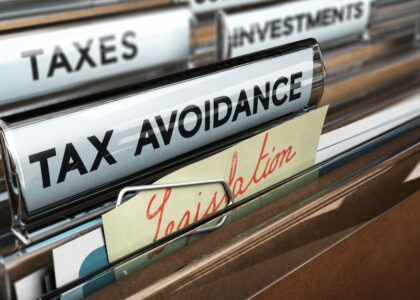Why Prime Costs Are the Restaurant Owner’s North Star
The restaurant industry operates on notoriously thin profit margins. Rent, utilities, insurance, and marketing all matter — but two cost categories stand above the rest: food and labor. Collectively known as prime costs, these two line items can consume 55%–70% of your sales if left unchecked. When tracked carefully, prime costs reveal the real health of your restaurant. When ignored, they quietly erode profits until it’s too late.
Strong bookkeeping acts as your compass, giving you daily visibility and the ability to steer your business toward profitability.
What Exactly Are Prime Costs? (A Deeper Dive)
Prime costs = Cost of Goods Sold (COGS) + Labor Costs.
1. Cost of Goods Sold (COGS)
This includes every ingredient used in your menu items:
- Food: meats, seafood, produce, dairy, spices, and sauces.
- Beverages: alcohol, coffee, soft drinks, and mixers.
- Packaging & disposables: take-out boxes, napkins, cutlery, and to-go cups.
2. Labor Costs
Labor costs are broader than just wages. They also include:
- Hourly wages and salaries for FOH (front of house) and BOH (back of house) staff.
- Overtime pay and shift differentials.
- Payroll taxes, workers’ comp, and health insurance.
- Training, uniforms, and benefits like meals or transportation subsidies.
Why It Matters: Prime costs directly reflect how efficiently you turn ingredients and human effort into sales. If they rise, your bottom line shrinks — fast.
Why Bookkeeping Is Critical (Beyond Compliance)
Bookkeeping for prime costs goes far beyond tax prep. It’s about turning data into decisions. Here’s how:
1. Daily or Weekly Tracking (Not Monthly)
Prime costs fluctuate daily with sales, weather, events, and staffing. Bookkeeping that’s only updated once a month is too slow. Weekly (or even daily) reporting gives you a chance to correct problems before payroll or supplier checks go out.
2. Linking POS, Inventory, and Payroll Systems
Good bookkeeping means integration. Your POS captures sales and menu mix; your inventory system records usage; your payroll system shows actual labor hours. Integrating these into one bookkeeping platform gives you a real-time dashboard of prime cost percentage.
3. Identifying Red Flags Early
- COGS spikes: May indicate waste, theft, or vendor price changes.
- Labor creep: Gradually higher hours per cover can signal inefficient scheduling or overstaffing.
- Seasonality mismatch: Sales dip but labor schedule doesn’t adjust.
4. Benchmarking and Goal Setting
By having accurate data, you can compare your restaurant to industry averages (fast casual vs. fine dining) and set realistic targets — for example, reducing prime costs from 67% to 60% over six months.
Run your business with confidence
Get help and guidance when you need it from real bookkeeping experts at Eric Buchholz Bookkeeping… Get Started right HERE!
How to Calculate Prime Costs (Expanded Example)
Let’s break it down step by step:
- Total Food & Beverage Costs: $42,000 (this includes waste and comps)
- Total Labor Costs: $38,000 (wages + taxes + benefits)
- Total Sales: $125,000
Prime Costs = (42,000 + 38,000) ÷ 125,000 × 100 = 64%
Tip: Use this as a rolling metric (weekly or monthly) to see trends over time.
How to Manage and Reduce Prime Costs (Deep Strategies)
A. For Food Costs (COGS):
- Recipe Costing Sheets: Bookkeepers can help maintain per-item costing sheets tied to inventory prices.
- Vendor Price Audits: Compare vendor invoices over time; negotiate or switch suppliers.
- Waste Logs: Track prep waste, spoilage, and returns daily.
- Menu Engineering: Classify items as Stars, Plow Horses, Puzzles, or Dogs. Boost the Stars, adjust the Dogs.
B. For Labor Costs:
- Forecast Sales, Then Schedule: Use historical sales data and upcoming events to build schedules.
- Cross-Training Staff: Increases flexibility and reduces the need for overtime.
- Daily Labor Reporting: Compare scheduled vs. actual hours at close-of-day.
- Incentivize Managers: Tie part of management bonuses to labor percentage targets.
C. Combine Forces (Prime Cost Perspective):
- Prime Cost per Guest: Track total prime costs divided by covers to see your cost per diner.
- Prime Cost vs. Sales Ratio by Daypart: Breakfast, lunch, and dinner can have different margins — track them separately.
Bookkeeping Tools & Best Practices
- Integrated Accounting Software (QuickBooks, Xero, Restaurant365): Connect POS, inventory, and payroll.
- Custom Chart of Accounts: Group food, beverage, labor, and benefits separately for clarity.
- Daily Sales & Labor Journal: Post sales and labor to the books every day, not at month-end.
- Variance Reports: Bookkeepers can run variance reports weekly to highlight discrepancies between theoretical and actual costs.
What Great Bookkeepers Do Differently
- Set up Key Performance Indicators (KPIs): Prime cost %, food cost %, labor cost %, sales per labor hour.
- Build Dashboards: Visual snapshots for owners and managers.
- Hold Accountability Meetings: Reviewing prime costs weekly with your team.
- Provide Proactive Insights: Not just numbers, but recommendations.
Ready to get started?
Take routine bookkeeping off your never-ending to-do list with the help of a certified professional. At Eric Buchholz Bookkeeping, we can help ensure that your business’s books close every month, and you’re primed for tax season. Our expert certified QuickBooks ProAdvisors have over 25 years of experience working with small business bookkeeping across various industries.
Whether you’re learning how to streamline your accounting to save time, or how to set-up your chart of accounts for the first time, Eric Buchholz Bookkeeping can guide you down the right path. Schedule your FREE phone consultation today!… Simply CLICK HERE.





